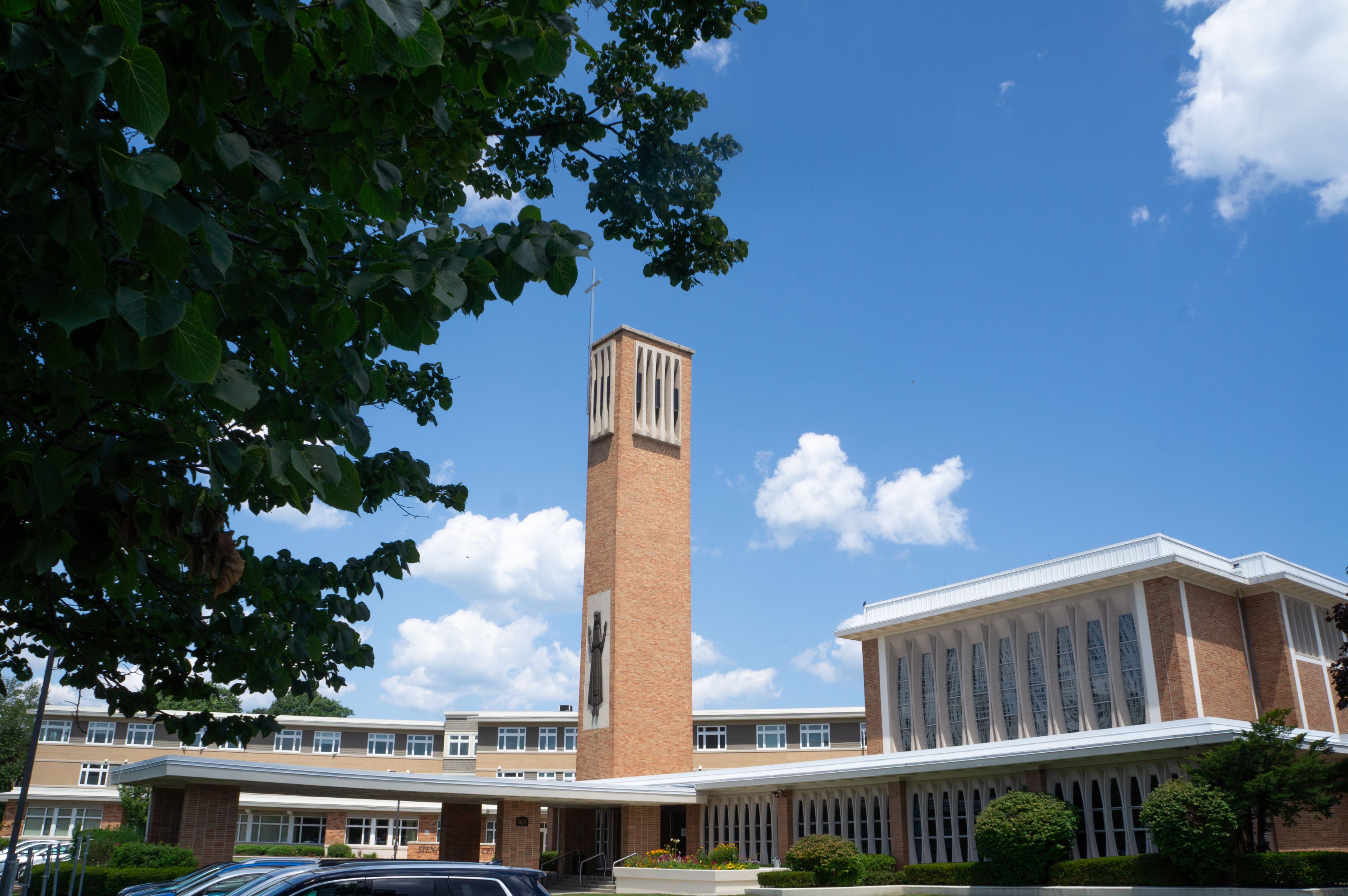
St. Catherine of Siena

The Racine Dominicans are formally named Sisters of Saint Dominic of Saint Catherine of Siena.
In Catherine of Siena, the teachings of Jesus came alive. Sinners, convicts, those suffering in hospitals and on the streets experienced Christ’s healing through Catherine’s gentleness and strength. Her amazing intellect, relentless logic, strong will and personal charm enabled her to restore peace to warring nations and health to a decaying church.
Freely choosing neither to marry nor enter religious life, Catherine tenaciously pursued knowledge, love and truth, thus freeing herself from human authority.
Greed and struggle for power among church and civic leaders in the fourteenth century succumbed to the influence of this highly contemplative, yet intensely opinionated and practical woman. Because she dared to live Gospel values, Catherine was subject to severe criticism. Yet, she never chose to “play it safe.” The Racine Dominicans are grateful to have such a woman for a patron – a woman whose courage and sanctity need to be lived in the twenty-first century.
St. Catherine of Siena lived from 1347 AD to 1380 AD as an Italian philosopher and theologian so renowned that she was summoned to Rome to give counsel to the Pope. Today, she is the patron saint of Italy and inspiration to many religious orders and individuals alike.
Our Chapel is named for St. Catherine of Siena and she also graces our bell tower.
“Be who God meant you to be and you will set the world on fire”.
-St. Catherine of Siena

St. Catherine of Siena by S. Sharon Simon
On the feast of Catherine, a Dominican woman par excellence from Siena, Italy, we celebrate in a Dominican tradition of praising, of blessing, and of preaching the good news of the gospel. From the words of Catherine we pray: Truth eternal, clothe me in yourself.
If the truth is in our heart, it will be expressed in our words and demonstrated in our actions. Catherine preached the truth and detested the wickedness of those seeking self-interest. She was called to nourish relationships and develop bonds of unity among diverse groups. She labored and struggled declaring that whatever her own needs, the love of the other had greater claim on her.
Catherine’s birth in Siena in 1347 brought the number of children in the Benincasa household to twenty-five. From her childhood Catherine showed signs of her desire to belong entirely to God, and by the time she was sixteen, she was experiencing a life of deep prayer. Catherine’s relationship with God manifested a quality of great simplicity.
We are told she was spontaneous, fiery and fearless. History records the fourteenth century in which Catherine lived as a period of great insecurity and disturbance. There was much turmoil and confusion. Often conflicts were settled on the battlefield rather than at the table of peace. Any reading of the life of Catherine brings to its pages, stories of violent conflicts and civil wars causing unrest and division.
With one glance into the fourteenth century of Catherine’s time and then into the twenty-first century of our time, we surely can see a reflection of similar upheavals, insecurities and fears. We too know wars and hostilities between nations and ethnic groups. Countless people suffer from famine, homelessness, poverty and oppression. Political corruption, economic greed, a cruel recession, rampant materialism and manipulation of the truth rear their ugly heads with increasing frequency. As well, the church of today is undergoing its own trials and difficulties, and has consequently lost its credibility for many people.
Catherine walked firmly and joyfully on the two feet of love of God and love of neighbor, of contemplation and action. She clearly demonstrates the active person whose life was rooted in prayer, and the measure of her prayer was found in the fruits of her actions and relationships.
One author describes Catherine as a frontier person. Who of us today would be summoned to Rome to give counsel to the Pope? She was always on the watch for new places to preach God’s message of love and mercy and truth. Her Dominican sense of mission continually pushed and drove her to fresh frontiers where the gospel’s transforming power needed to be preached.
We dare to keep our ears and hearts open for the truth, and when responding, always seek the glory of the One who created us.
